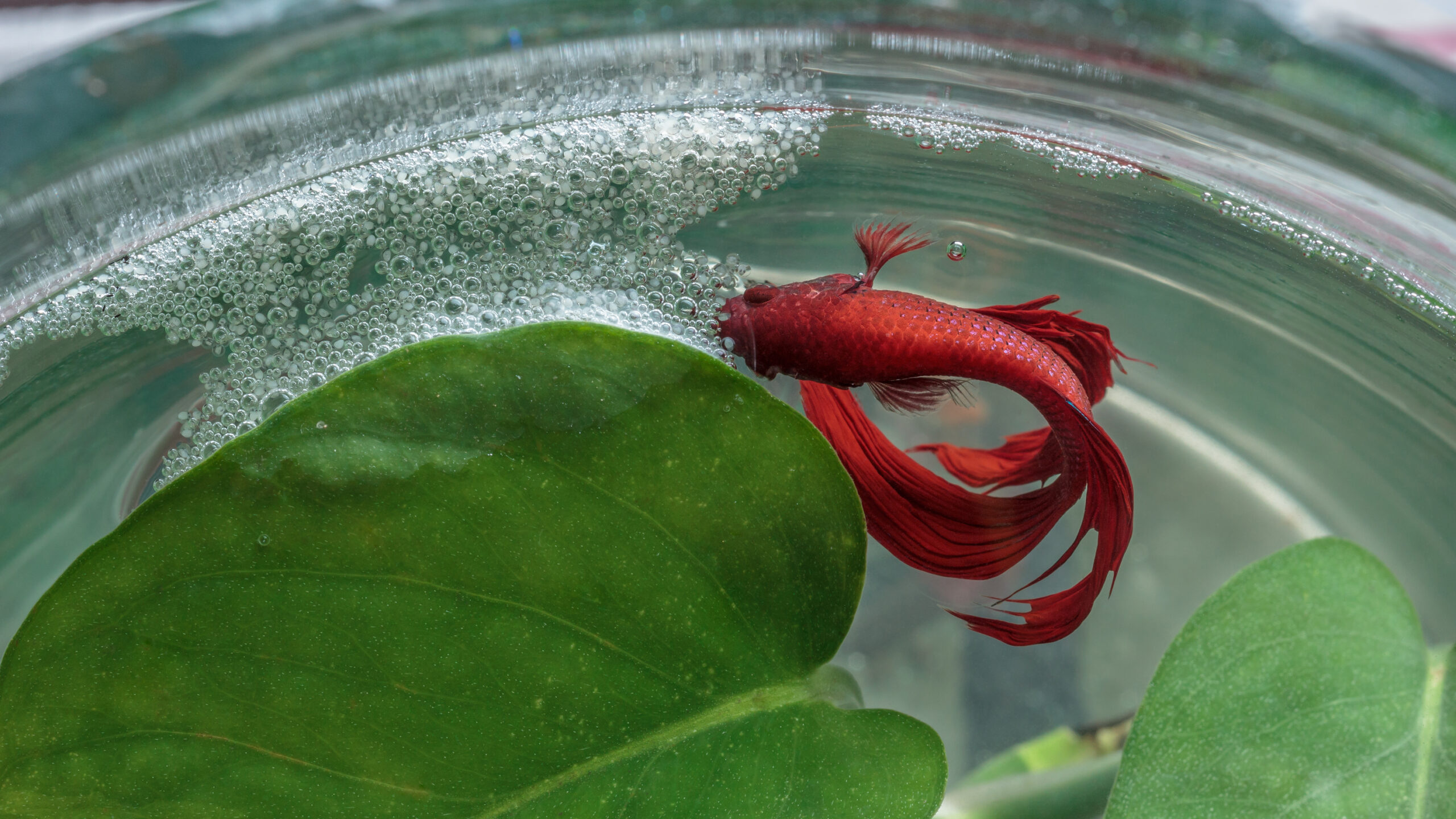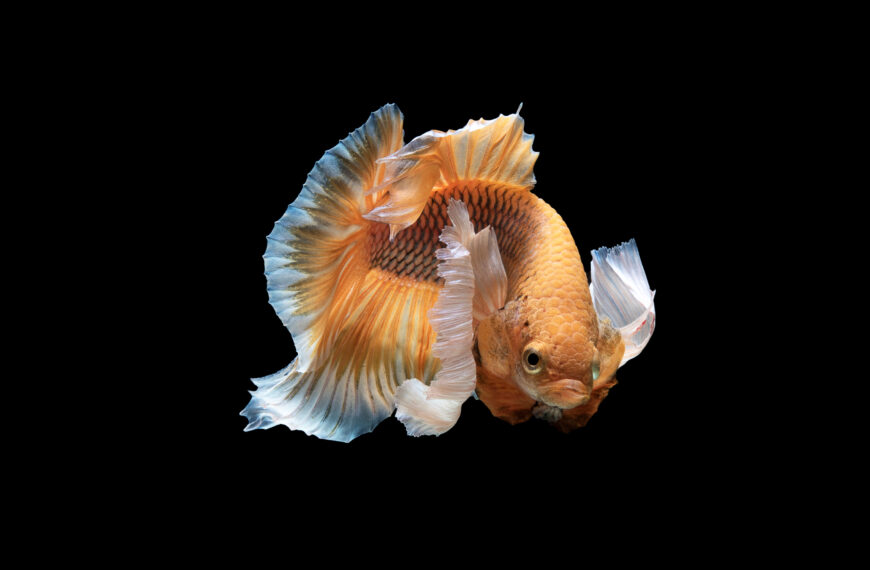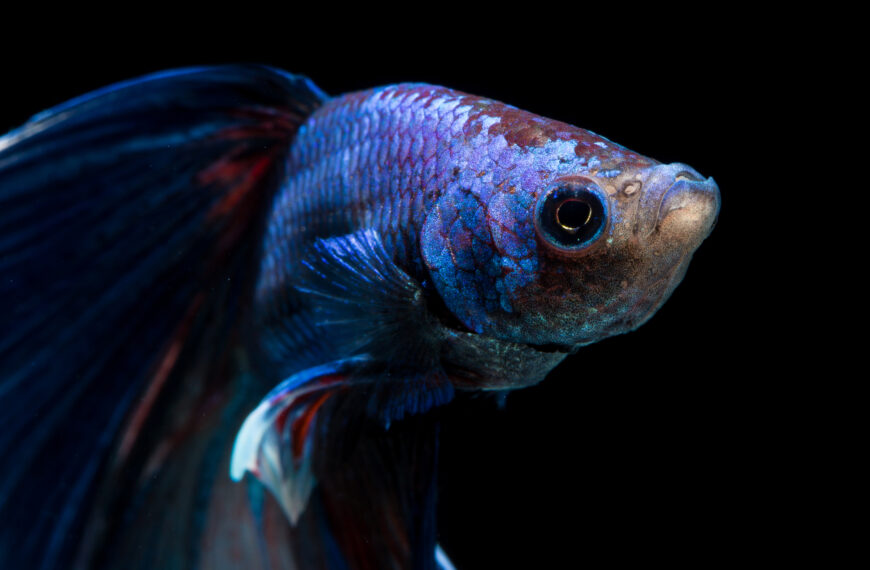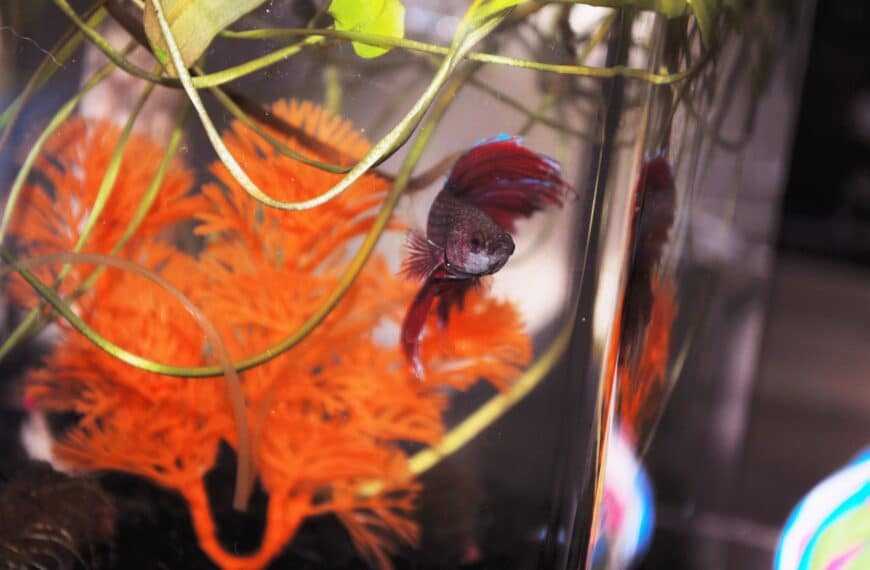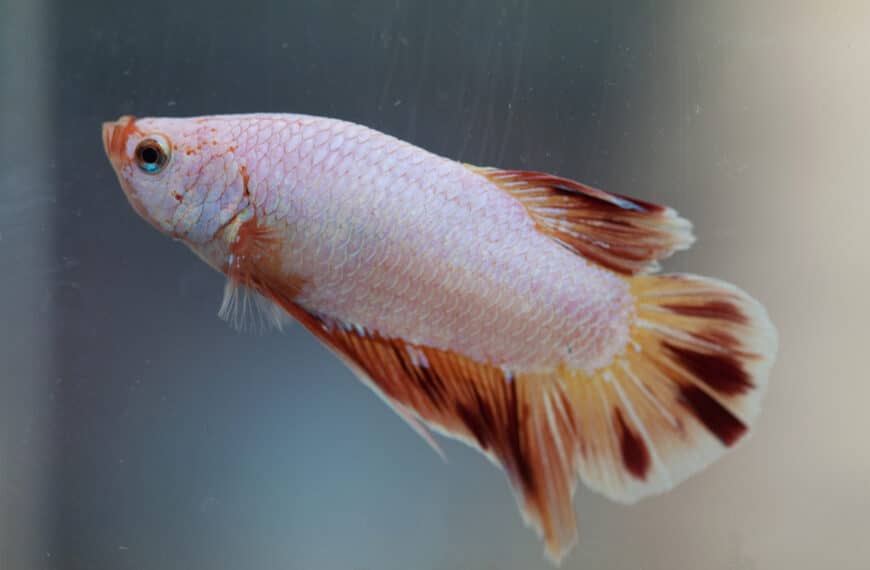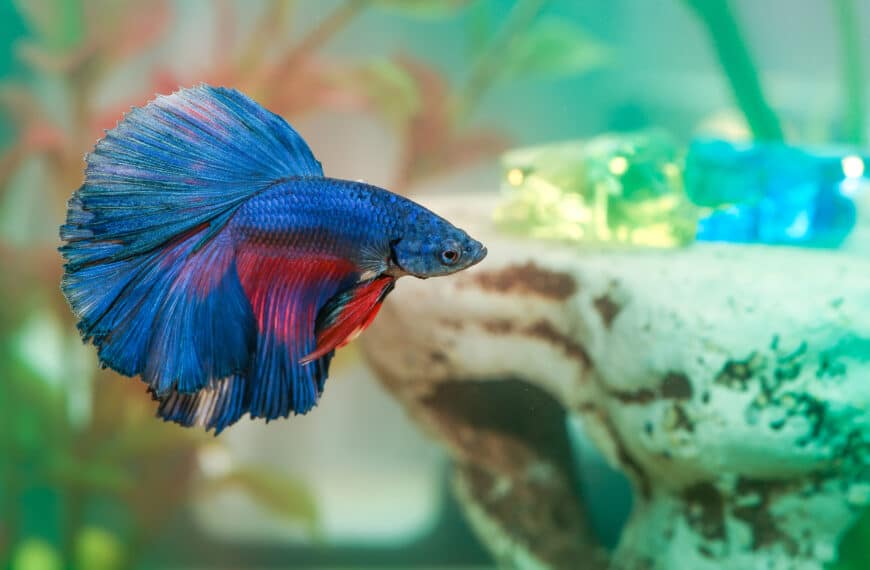If you would like to breed betta fish at home, this is something I have experience with, and I’m about to provide you with a guide on the matter.
Quick Answer
To breed betta fish, you’ll have to find a good mating pair, prepare a breeding tank, condition both of the fish for breeding, introduce the fish to each other, monitor the behavior, allow for courtship, spawning, and bubble nest building, and more. Betta fish breeding involves many steps.
Keep reading this in-depth guide on how to breed betta fish for step by step instructions on how to achieve the best rates of success when attempting to make some betta fish fry.
Breeding Betta Fish – Step by Step
Right now, I want to take you through a simple step by step process on how to breed betta fish for the best results.
1. Choose a mating pair
To get started, you’ll first need to have a mating pair of betta fish. This means that you have to have both a male and a female fish. When choosing fish for mating, you want to make sure that they are healthy.
Therefore, make sure that there are no visible or detectable signs of illness of any sort, whether anything major or minor. You do not want your breeding pai to have even the smallest of infections or illnesses, as this can have dire consequences for the adult fish throughout the making process.
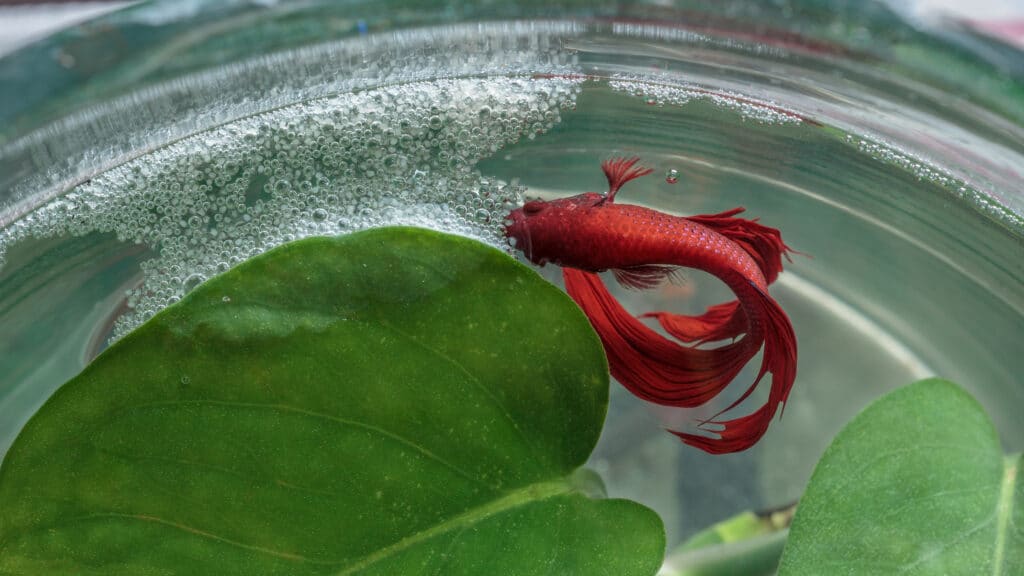
You also want to look for other physical attributes. For instance, some people want betta fish that have specific colors, in the hopes of producing smaller betta fish with those same colors, or a combination of colors from both parent fish.
2. Set Up a Breeding Tank
You will then want to set up a breeding tank. Remember that you really should not breed betta fish in the same tank as they usually live, especially because the fry will need to be kept separately once they are born. For a breeding tank, you should select a size of around 20 gallons, as there should be plenty of space.
Remember that a breeding tank also needs to be very clean, but should also not have much water flow. Therefore, a good sponge filter and an air stone is recommended. The sponge filter is strong enough to clean the water without sucking in fish fry or creating too much water movement, and the air stone will help keep the water oxygenated.
You’ll then also want to add some artificial or live plants into the tank, as your betta fish will want to have some hiding spots.
More often than not, when betta fish, the males, produce a bubble nest, they’ll do so around plants and other such areas. You then also need to add a heater into the breeding tank, because the temperature needs to be slightly higher than usual, between 78 and 82 degrees Fahrenheit, or between 25 and 28 degrees Celsius.
3. Provide High-Quality Food
To get betta fish to breed, you’ll also want to provide them with very high quality food, at least for a few weeks before breeding.
If you start feeding your betta fish healthy foods such as brine shrimp and bloodworms, especially things that have a whole lot of protein, should help increase their overall health and readiness to breed.
Simply put, your breeding fish should be in the best possible condition, and a lot of this has to do with nutrition.
4. Introduce the Male and Female and Observe
Once the breeding tank is set up and ready to go, you need to introduce the male betta fish and the female to each other. Here, you want to keep the betta fish in separate containers or sections of the breeding tank as they get to know each other. You want the fish to be able to see each other, but not to interact physically.
Remember that they can be aggressive and territorial, and even a male and female that should make for a good breeding pair could still bully and attack each other. Therefore, you need to get the fish used to each other before you release them.
At this point, you also want to observe the behavior of both of the fish. First, you should notice that there is no aggression between them. Next, the female should also appear to be very receptive towards the male, and may even start displaying vertical stripes along her body. If the female is doing this, it means that she is ready to mate.
At the same time, one of the biggest signs that the male betta fish is ready to mate is if it starts building a bubble nest.
This bubble nest usually takes form at the top of the tank, and looks like a whole lot of small bubbles. The point of a bubble nest is to help protect the baby betta fish fry from outside harm, and to provide them with comfortable living conditions. If you see that the male betta fish is building a bubble nest, it is ready to mate.
5. Maintain Tank Conditions and Release the Fish
This whole time, you should be maintaining ideal tank conditions. This means that you should be performing very small water changes on a regular basis. If everything is ready to go, you should remove some of the water in the tank to make it more shallow.
In the wild, when betta fish breed, it is usually when the water levels in their natural environments are fairly shallow. If you make the water a little more shallow, it should naturally spur the betta fish on to breed. With everything ready to go, you can now release the female into the tank along with the male, so they can do their thing.
If all goes well, you should see the male flaring his fins and displaying vibrant colors, with the aim being to attract the female to him. The male may also try to embrace or bump into the female and lead her to the bubble nest. The point of this is to cause the female to release her eggs into the bubble nest. As the eggs fall down onto the bubble mask, you should see the male fertilizing them.
6. Remove the Female
Unlike with most of the animal kingdom, with betta fish, the male is the one that takes care of the eggs. The male will protect the eggs, but will also attack the female. Therefore, the female needs to be removed from the breeding tank once she has laid the eggs, or else the male may attack her. At this point, you can put the female betta fish back in her own tank.
7. Hatching and Caring for Fry
It should take no more than three days for the baby betta fish or fish fry to hatch from the eggs after they have been spawned. Once they hatch, you can start feeding them very small foods, such as powdered fish fried food, micro worms, or infusoria.
As the betta fish fry grow, slowly transition to crushed fish flake or fish pellet food. Make sure to maintain ideal conditions for the betta fish, including a clean tank. As the fish fry grow older, you can separate them and put them in different tanks.
In fact, this is strongly recommended, as young betta fish may be cannibalistic in nature and eat each other. Furthermore, as you might know, betta fish are also really aggressive in nature, and even siblings will start to attack each other as they get older. For the most part, keeping more than one betta fish, especially males, in the same tank, is not recommended.
Conclusion
As you can see from the simple yet in-depth guide I’ve provided you with above, breeding betta fish is not very difficult at all.
As long as you have a good mating pair, and provide them with all of the conditions they need to spur on the mating ritual, you should see great success.
Just don’t forget to separate the fish fry from each other once they start growing, or else more problems will ensue.

